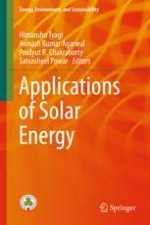2018 | OriginalPaper | Buchkapitel
Water–Lithium Bromide Absorption Chillers for Solar Cooling
verfasst von : Ashok Verma, Satish, Prodyut R. Chakraborty
Erschienen in: Applications of Solar Energy
Verlag: Springer Singapore
Aktivieren Sie unsere intelligente Suche, um passende Fachinhalte oder Patente zu finden.
Wählen Sie Textabschnitte aus um mit Künstlicher Intelligenz passenden Patente zu finden. powered by
Markieren Sie Textabschnitte, um KI-gestützt weitere passende Inhalte zu finden. powered by
